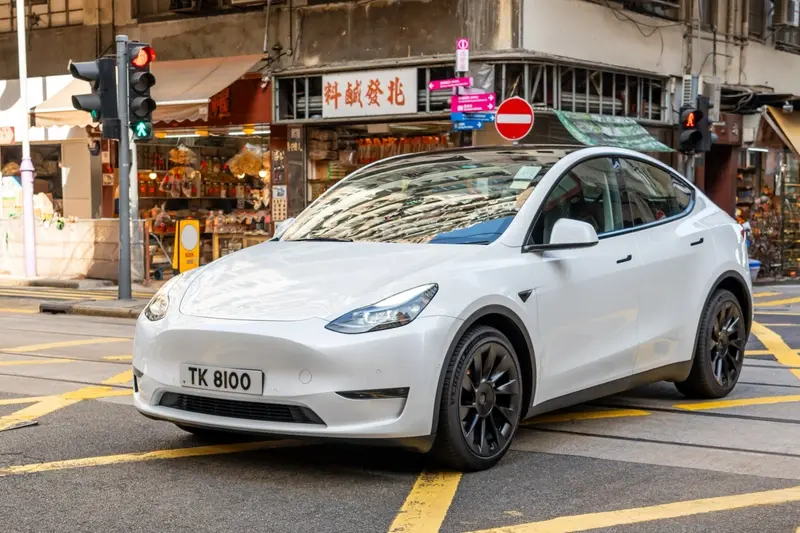
Unsuspecting US investors returning to the office after the long Labour Day weekend on Tuesday (3 Sep) were given a rude awakening with US indices falling hard, led by the Technology-focused Nasdaq Composite index.
AI darling Nvidia (NVDA:NASDAQ) was the third biggest faller in the S&P 500 index, down around 15% on the week, after news broke that the chip designer was facing a probe by the US Department of Justice into potential violations of anti-trust laws.
Nvidia’s woes dragged down chip stocks across the board which saw the SOX index, representing the largest semiconductor stocks dropping around 8% over the week.
A big focus for markets is the hotly anticipated August non-farm payrolls print on Friday (6 Sep) lunchtime with economists expecting a bounce back to 165,000 jobs after July’s disappointing 114,000.
A precursor to the jobs report (5 Sep), which measures private sector employment missed consensus expectations by a wide margin. However, stronger readings for the services and composite PMI numbers for August settled investor concerns of economic slowdown.
TESLA
Tesla (TSLA:NASDAQ) proved that it was the EV (electric vehicle) ‘comeback kid’ this week as shares rallied nearly 10% to $230 thanks to stellar August car sales in China. Volumes hit 63,000, a jump of 37% from July, as customers from smaller Chinese cities snapped up Model 3s and Model Ys.
Also grabbing attention is its FSD (full self-driving) advanced driver assistance software roadmap for China and Europe, due for launch in the first quarter of 2025, subject to regulatory approval.
Back in June, Shanghai allowed 10 vehicles to carry out tests of FSD, paving the path for its roll out in China. Tesla CEO, Elon Musk said in July that he was likely to get regulatory approval for FSD by the end of the year, although dealing with China’s bureaucracy probably means investors shouldn’t hang their hats of that.
Talk of Tesla launching its first robotaxis, called ‘Cybercab’ on 10 October in California, according to reports from Bloomberg, would be another milestone, if and when it arrives.
BROADCOM
What’s happening at Nvidia seems to be jangling the nerves of investors right across the semiconductors space. Broadcom (AVGO:NASDAQ) is set to see sharp declines later today (6 Sep) despite publishing third quarter results that beat the average analyst estimate, after it issued guidance for fourth quarter revenue that wasn’t as strong as hoped for.
That it predicted AI (artificial intelligence) revenue of around $12 billion in 2024 (to 31 Oct), up from $11 billion previously, while encouraging, shows just how crucial AI has become for the chip designer, perhaps why investors are a little nervous.
This is illustrated by Broadcom’s non-AI revenues. On a post-earnings call, Broadcom executives reported that broadband revenue declined 49% in Q3, while non-AI networking fell 41%.
Looks like it’ll be a tough end of week session for Broadcom stock, with pre-market data pointing to declines of close on 10%, unwinding most of the gains made through August.
DOLLAR TREE
Discounters should be in fine fettle as US consumers continue to hunt for bargains, but the cash-strapped shopper’s focus on necessities has actually boosted behemoths like Walmart (WMT:NYSE) and Target (TGT:NYSE) at the expense of the likes of Dollar Tree (DLTR:NASDAQ).
Shares in the discount variety stores operator suffered their worst day (4 Sep) on Wall Street for over two decades, leaving the stock 22% down at $68.50, following the delivery of severely disappointing second quarter earnings and a full year guidance downgrade.
Second quarter earnings per share of $0.67 was well short of prior guidance of $1.00 to $1.10, while sales of $7.37 billion were light of the $7.49 billion consensus was looking for. Dollar Tree slashed its full year earnings guidance from between $6.50 to $7 to a $5.20 to $5.60 range.
Chief financial officer Jeff Davis pinned a portion of the second quarter earnings miss on ‘a comp shortfall which reflected the increasing effect of macro pressures on the purchasing behaviour of Dollar Tree’s middle and higher income customers.’




